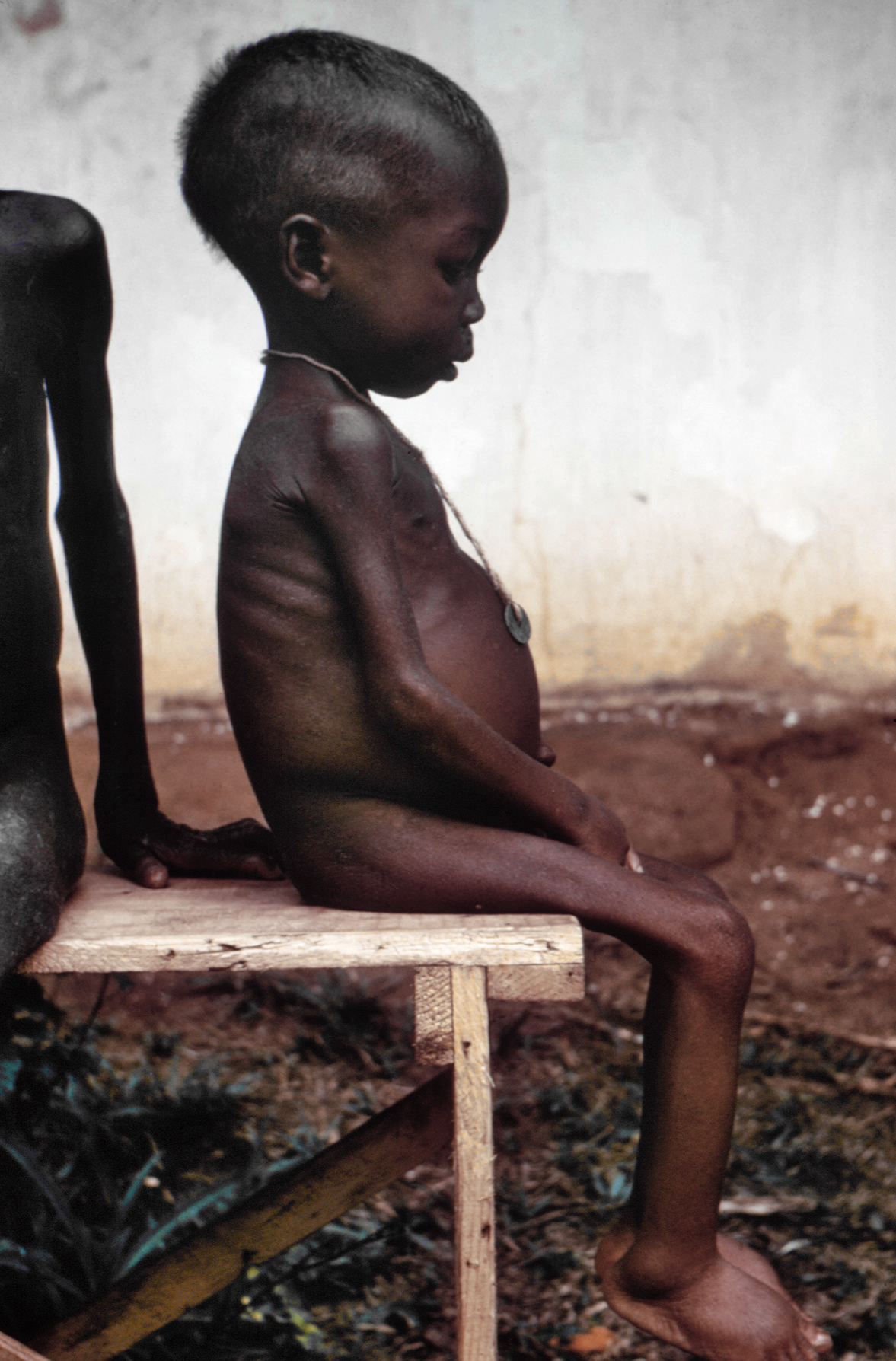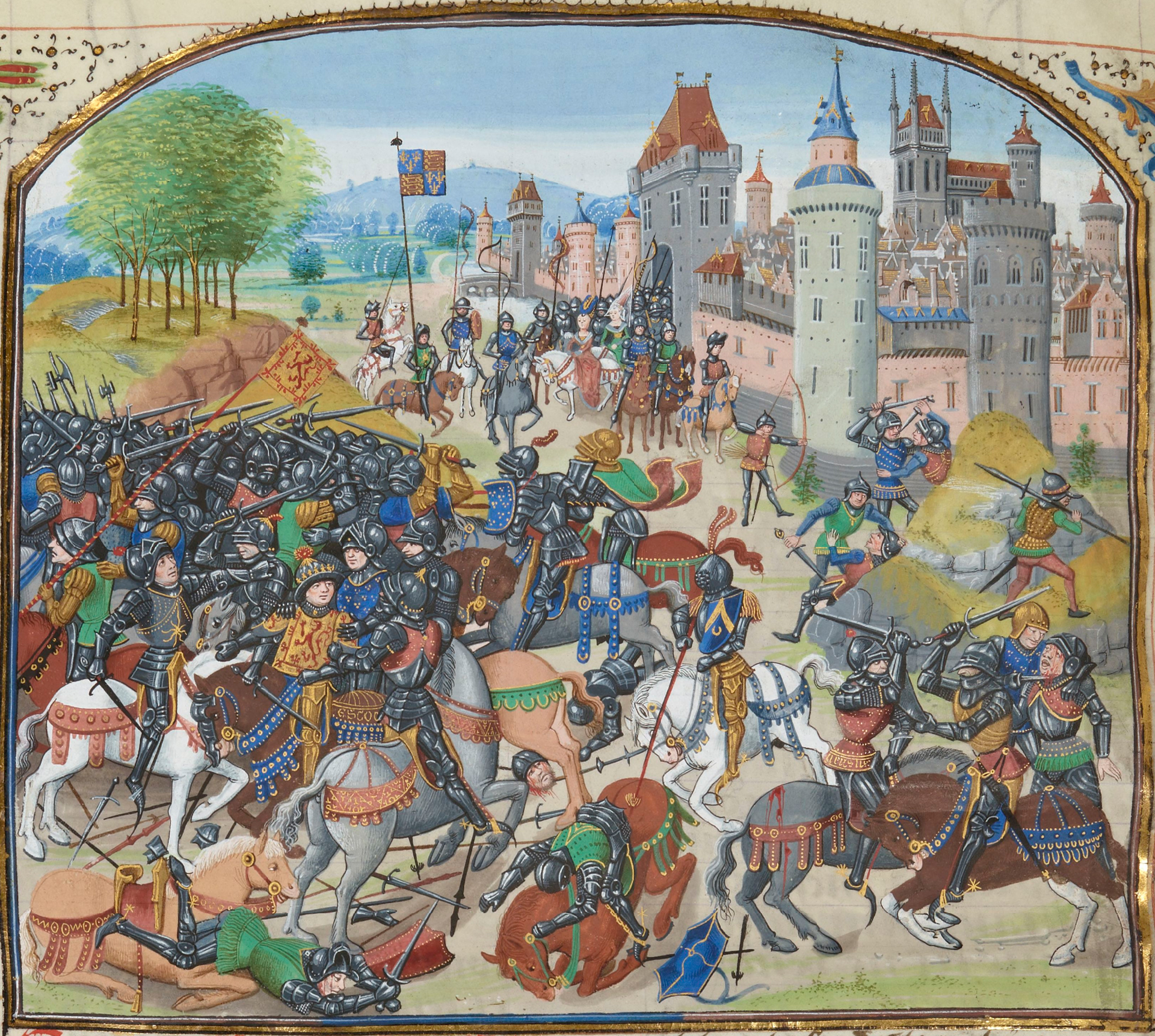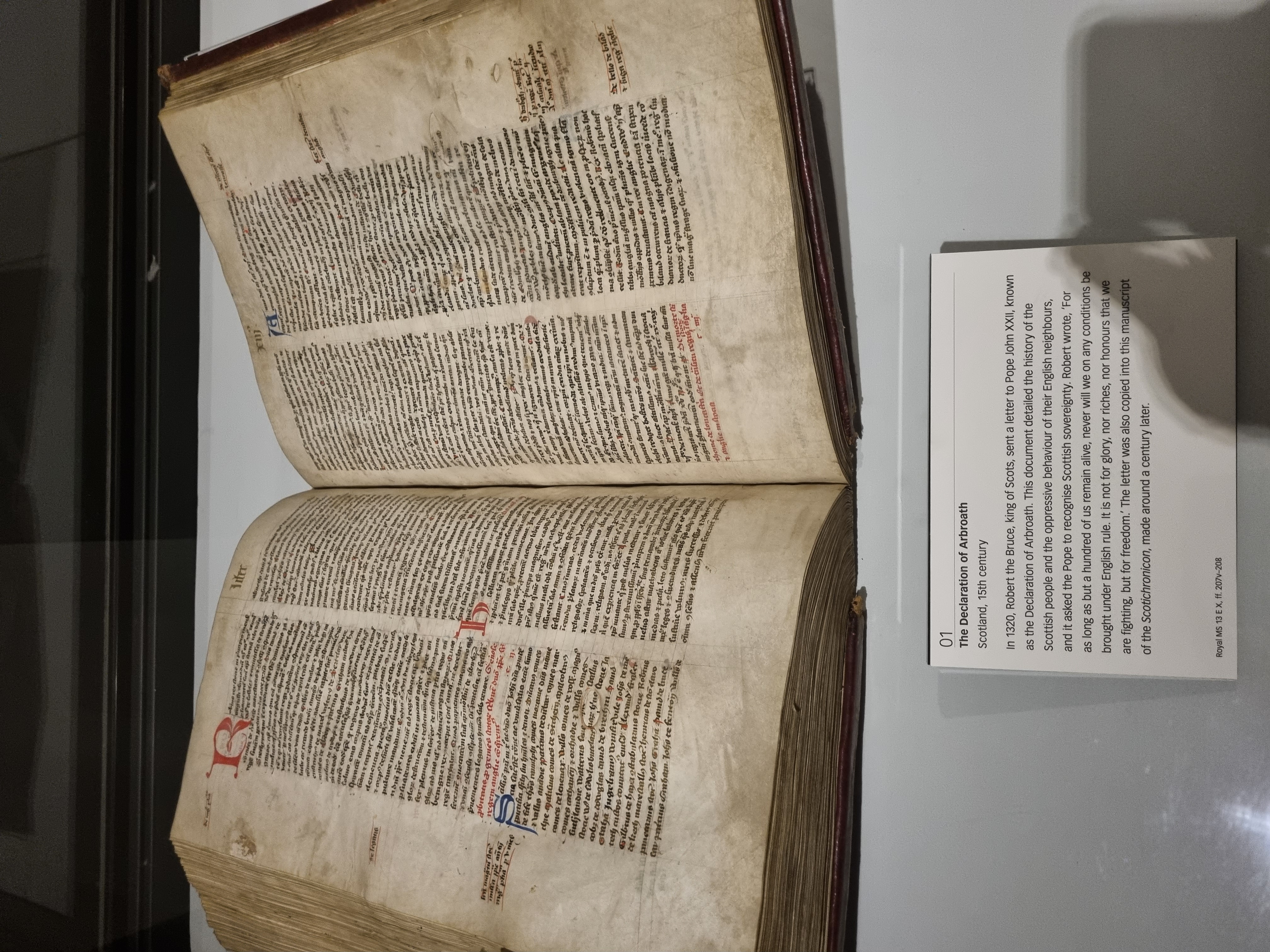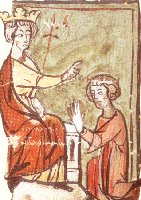|
Clan Ramsay
Clan Ramsay is a Lowland Scottish clan.Way, George and Squire, Romily. ''Collins Scottish Clan & Family Encyclopedia''. (Foreword by The Rt Hon. The Earl of Elgin KT, Convenor, The Standing Council of Scottish Chiefs). Published in 1994. Pages 298 – 299. History Origins of the clan In the eleventh century a ram in the sea is believed to have been an emblem on the seal of an abbey in Huntingdon. In 1124, David of Scotland, Earl of Huntingdon was accompanied by many young Norman noblemen. Amongst these nobles may have been Symon de Ramesie. Symon was granted lands in Midlothian from David and also witnessed an important charter to the monks of Holyrood Abbey in 1140. 13th century and branches of the clan By the 13th century there were five major branches of the Clan Ramsay: the Ramsays of Dalhousie, the Ramsays of Auchterhouse, the Ramsays of Banff, the Ramsay of Forfar and the Ramsays of Clatto. In 1255, during the minority of Alexander III of Scotland, William de Ramsay ... [...More Info...] [...Related Items...] OR: [Wikipedia] [Google] [Baidu] |
Unicorn
The unicorn is a legendary creature that has been described since Classical antiquity, antiquity as a beast with a single large, pointed, spiraling horn (anatomy), horn projecting from its forehead. In European literature and art, the unicorn has for the last thousand years or so been depicted as a white horse-like or goat-like animal with a long straight horn with spiralling grooves, cloven hooves, and sometimes a goat's beard. In the Middle Ages and Renaissance, it was commonly described as an extremely wild forest, woodland creature, a symbol of purity and grace, which could be captured only by a virgin. In encyclopedias, its horn was described as having the power to render poisoned water potable and to heal sickness. In medieval and Renaissance times, the tusk of the narwhal was sometimes sold as a unicorn horn. A bovine type of unicorn is thought by some scholars to have been depicted in Indus seal, seals of the Bronze Age Indus Valley Civilisation, Indus Valley civiliza ... [...More Info...] [...Related Items...] OR: [Wikipedia] [Google] [Baidu] |
Auchterhouse
Auchterhouse is a village, community, and civil parish in the Scottish council area of Angus, located north west of Dundee, south east of Alyth and south west of Forfar. It lies on the southern edge of the Sidlaw Hills, below Auchterhouse Hill, high. The parish, which is coterminous with the community, had a population of 520 in 2001. The village, formerly known as ''Milltown of Auchterhouse'', straddles the B954 Muirhead to Newtyle road. About east lies the larger village of Kirkton of Auchterhouse, where the church and school are located. Singer Billy MacKenzie lived in the village from 1991 until his death in 1997. Kirkton, in Auchterhouse, was the subject of the painting 'Sidlaw Village, Winter' by James MacIntosh Patrick. History The earliest human settlement discovered around Auchterhouse dates from 3500 to 1000 BC, in the form of stone and bronze tools used by the first farmers to clear woodland. Wheat and barley were grown, and cattle and sheep kept, while ... [...More Info...] [...Related Items...] OR: [Wikipedia] [Google] [Baidu] |
Battle Of Neville's Cross
The Battle of Neville's Cross took place during the Second War of Scottish Independence on 17 October 1346, half a mile (800 m) to the west of Durham, England. An invading Scottish army of 12,000 led by King David II was defeated with heavy loss by an English army of approximately 6,000–7,000 men led by Ralph Neville, Lord Neville. The battle was named after an Anglo-Saxon stone cross that stood on the hill where the Scots made their stand. After the victory, Neville paid to have a new cross erected to commemorate the day. The battle was the result of the invasion of France by England during the Hundred Years' War. King Philip VI of France () called on the Scots to fulfil their obligation under the terms of the Auld Alliance and invade England. David II obliged, and after ravaging much of northern England was taken by surprise by the English defenders. The ensuing battle ended with the rout of the Scots, the capture of their king and the death or capture of most of their ... [...More Info...] [...Related Items...] OR: [Wikipedia] [Google] [Baidu] |
Starvation
Starvation is a severe deficiency in caloric energy intake, below the level needed to maintain an organism's life. It is the most extreme form of malnutrition. In humans, prolonged starvation can cause permanent organ damage and eventually, death. The term ''inanition'' refers to the symptoms and effects of starvation. Starvation may also be used as a means of torture or execution. According to the World Health Organization (WHO), hunger is the single gravest threat to the world's public health.Malnutrition The Starvelings The WHO also states that is by far the biggest contributor to [...More Info...] [...Related Items...] OR: [Wikipedia] [Google] [Baidu] |
Hermitage Castle
Hermitage Castle is a semi-ruined castle in the border region of Scotland. It is under the care of Historic Scotland. The castle has a reputation, both from its history and its appearance, as one of the most sinister and atmospheric castles in Scotland. History Origins of the name It is thought that the name derives from Old French: – guardhouse. The castle was known as ''the guardhouse of the bloodiest valley in Britain'', and the "Strength of Liddesdale". Hermitage Castle was supposedly built by one Nicholas de Soulis around 1240, in a typical Norman Motte and Bailey pattern. It stayed in his family until approximately 1320 when his descendant, William de Soulis, forfeited it because of suspected witchcraft and the attempted regicide of King Robert I of Scotland. Legend has it that Soulis's tenantry, having suffered unbearable depredations, arrested him, and at the nearby Ninestane Rig (a megalithic circle), had him boiled to death in molten lead. In actuality, he ... [...More Info...] [...Related Items...] OR: [Wikipedia] [Google] [Baidu] |
William Douglas, Lord Of Liddesdale
Sir William Douglas, Lord of Liddesdale (–1353), also known as the Knight of Liddesdale and the Flower of Chivalry, was a Scottish nobleman and soldier active during the Second War of Scottish Independence. Family and early life Douglas' father, James Douglas of Lothian, a minor landowner in the Lothians was a second cousin of the "Good Sir James" Douglas, a hero of the First War of Scottish Independence. At some point, , Douglas succeeded to his small desmesne. Some time later, , he became godfather to his third cousin William, son of Sir Archibald Douglas, and nephew of the "Good Sir James". Douglas was to hold minor positions of state and is not much heard of until 1332. Political context Robert the Bruce died in 1329, while his son David II was still a child. Edward III of England, son of Edward II, had just attained his majority and was known to resent his father's disgrace at the hands of the Scots, and his own supposed humiliation when forced to sign the Treaty o ... [...More Info...] [...Related Items...] OR: [Wikipedia] [Google] [Baidu] |
Roxburghshire
Roxburghshire or the County of Roxburgh ( gd, Siorrachd Rosbroig) is a historic county and registration county in the Southern Uplands of Scotland. It borders Dumfriesshire to the west, Selkirkshire and Midlothian to the north-west, and Berwickshire to the north. To the south-west it borders Cumberland and to the south-east Northumberland, both in England. It was named after the Royal Burgh of Roxburgh, a town which declined markedly in the 15th century and is no longer in existence. Latterly, the county town of Roxburghshire was Jedburgh. The county has much the same area as Teviotdale, the basin drained by the River Teviot and tributaries, together with the adjacent stretch of the Tweed into which it flows. The term is often treated as synonymous with Roxburghshire, but may omit Liddesdale as Liddel Water drains to the west coast.Ordnance Gazetteer of Scotland, by, Francis Groome, publ. 2nd edition 1896. Article on Roxburghshire History The county appears to ... [...More Info...] [...Related Items...] OR: [Wikipedia] [Google] [Baidu] |
Declaration Of Arbroath
The Declaration of Arbroath ( la, Declaratio Arbroathis; sco, Declaration o Aiberbrothock; gd, Tiomnadh Bhruis) is the name usually given to a letter, dated 6 April 1320 at Arbroath, written by Scottish barons and addressed to Pope John XXII. It constituted King Robert I's response to his excommunication for disobeying the pope's demand in 1317 for a truce in the First War of Scottish Independence. The letter asserted the antiquity of the independence of the Kingdom of Scotland, denouncing English attempts to subjugate it. Generally believed to have been written in Arbroath Abbey by Bernard of Kilwinning (or of Linton), then Chancellor of Scotland and Abbot of Arbroath, and sealed by fifty-one magnates and nobles, the letter is the sole survivor of three created at the time. The others were a letter from the King of Scots, Robert I, and a letter from four Scottish bishops which all made similar points. The ''Declaration'' was intended to assert Scotland's status as a ... [...More Info...] [...Related Items...] OR: [Wikipedia] [Google] [Baidu] |
Robert The Bruce
Robert I (11 July 1274 – 7 June 1329), popularly known as Robert the Bruce (Scottish Gaelic: ''Raibeart an Bruis''), was King of Scots from 1306 to his death in 1329. One of the most renowned warriors of his generation, Robert eventually led Kingdom of Scotland, Scotland during the First War of Scottish Independence against Kingdom of England, England. He fought successfully during his reign to regain Scotland's place as an independent kingdom and is now revered in Scotland as a folk hero, national hero. Robert was a fourth great-grandson of David I of Scotland, King David I, and his grandfather, Robert de Brus, 5th Lord of Annandale, was one of the claimants to the Scottish throne during the "Great Cause". As Earl of Carrick, Robert the Bruce supported his family's claim to the Scottish throne and took part in William Wallace's revolt against Edward I of England. Appointed in 1298 as a Guardian of Scotland alongside his chief rival for the throne, John Comyn III of Bade ... [...More Info...] [...Related Items...] OR: [Wikipedia] [Google] [Baidu] |
Edward I Of England
Edward I (17/18 June 1239 – 7 July 1307), also known as Edward Longshanks and the Hammer of the Scots, was King of England and Lord of Ireland from 1272 to 1307. Concurrently, he ruled the duchies of Duchy of Aquitaine, Aquitaine and Duchy of Gascony, Gascony as a vassal of the French king. Before his accession to the throne, he was commonly referred to as the Lord Edward. The eldest son of Henry III of England, Henry III, Edward was involved from an early age in the political intrigues of his father's reign, which included a rebellion by the English barons. In 1259, he briefly sided with a baronial reform movement, supporting the Provisions of Oxford. After reconciliation with his father, however, he remained loyal throughout the subsequent armed conflict, known as the Second Barons' War. After the Battle of Lewes, Edward was held hostage by the rebellious barons, but escaped after a few months and defeated the baronial leader Simon de Montfort at the Battle of Eve ... [...More Info...] [...Related Items...] OR: [Wikipedia] [Google] [Baidu] |
Ragman Rolls
Ragman Rolls are the collection of instruments by which the nobility and gentry of Scotland subscribed allegiance to King Edward I of England, during the time between the Conference of Norham in May 1291 and the final award in favour of Balliol in November 1292; and again in 1296. Of the former of these records two copies were preserved in the Chapter House at Westminster Abbey (now in the National Archives (United Kingdom) at Kew), and it has been printed by Thomas Rymer. Another copy, preserved originally in the Tower of London, is now also in the National Archives. The latter record, containing the various acts of homage and fealty extorted by Edward from John Balliol and others in the course of his progress through Scotland in the summer of 1296 and in August at the parliament of Berwick, was published by Prynne from the copy in the Tower and now in the National Archives. Both records were printed by the Bannatyne Club in 1834. The derivation of the word ''ragman'' is ... [...More Info...] [...Related Items...] OR: [Wikipedia] [Google] [Baidu] |
Wars Of Scottish Independence
The Wars of Scottish Independence were a series of military campaigns fought between the Kingdom of Scotland and the Kingdom of England in the late 13th and early 14th centuries. The First War (1296–1328) began with the English invasion of Scotland in 1296, and ended with the signing of the Treaty of Edinburgh–Northampton in 1328. The Second War (1332–1357) began with the English-supported invasion by Edward Balliol and the 'Disinherited' in 1332, and ended in 1357 with the signing of the Treaty of Berwick. The wars were part of a great crisis for Scotland and the period became one of the most defining times in its history. At the end of both wars, Scotland retained its status as an independent state. The wars were important for other reasons, such as the emergence of the longbow as a key weapon in medieval warfare. The First War of Independence: 1296–1328 Background King Alexander III of Scotland died in 1286, leaving his three-year-old granddaughter Marga ... [...More Info...] [...Related Items...] OR: [Wikipedia] [Google] [Baidu] |









